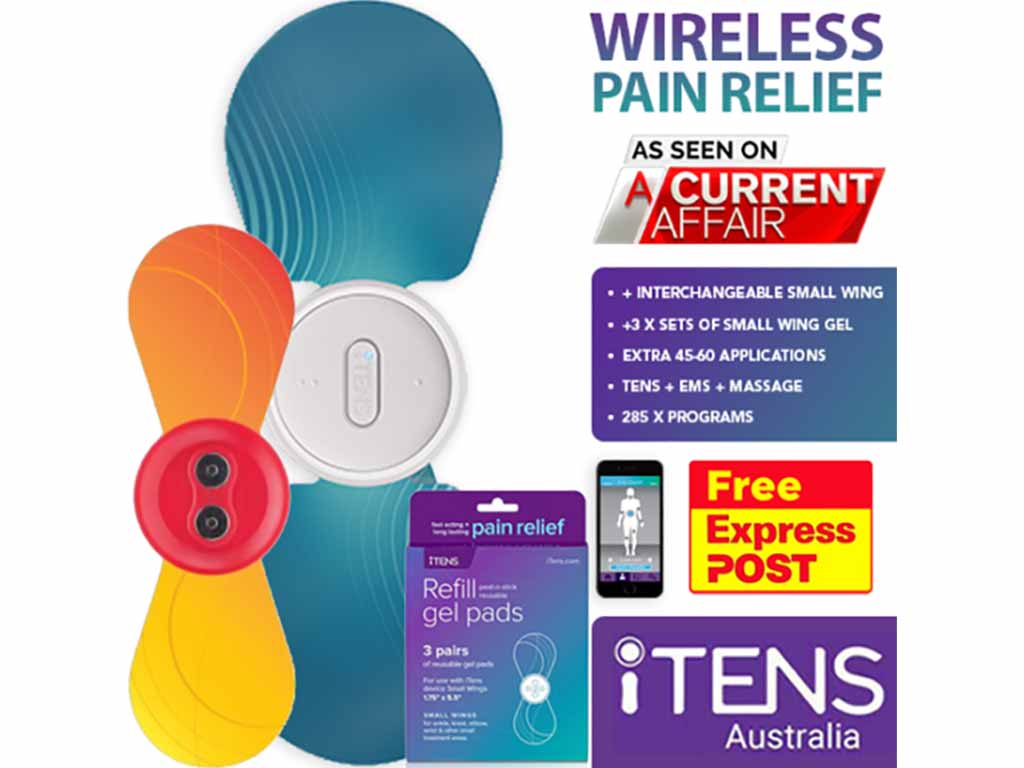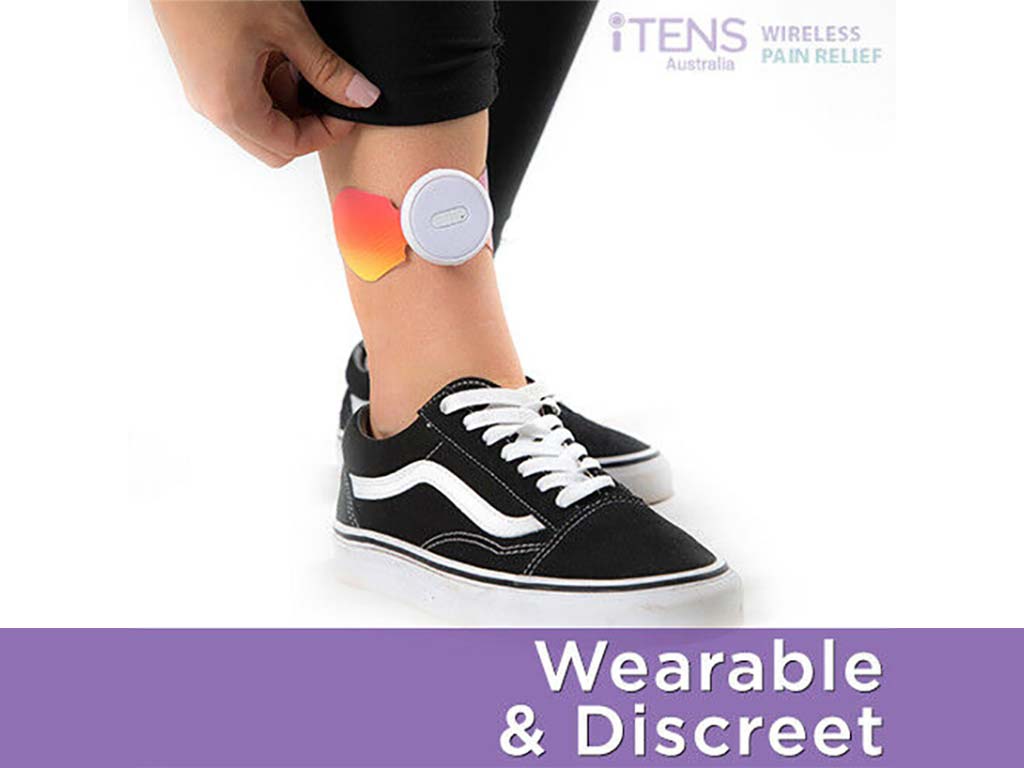
Transcutaneous Electrical Nerve Stimulation or TENS electronic pulse massager is an electrical device for pain relief. It works by delivering electrical currents to the body via electrode patches placed on the skin. Furthermore, TENS therapy presents numerous benefits. It is non-invasive, drug-free, versatile, customisable, and can complement other treatments. Also, TENS can treat various conditions. It can manage chronic pain and acute pain. Additionally, it aids musculoskeletal pain and neuropathic pain.
Acute and chronic pain is a common issue affecting millions. It can be debilitating, affecting the overall quality of life. Therefore, finding effective ways to manage the discomfort is essential. Standard methods of pain relief may include medications and physical therapy. However, some individuals are turning to alternative solutions like TENS treatment. Professionals and physical therapists recommend it. This article will present the TENS pulse massager, its benefits, and the treatable conditions.
How TENS Electronic Pulse Massager Works
A TENS electronic pulse massager works through various analgesic mechanisms. Foremost, the electronic device stimulates the production and release of endorphins. These are the natural chemicals of the body that act as natural painkillers. Endorphins bind to opioid receptors in the brain and spinal cord. Therefore, it leads to a natural and profound sense of relief from discomfort.
The TENS device also employs the Pain Gate Theory. According to this theory, the nervous system can only transmit limited sensory information to the brain. The electrical pulses from TENS can stimulate the nerves carrying non-painful signals. It can effectively close the “gate” to painful inputs. As a result, the brain perceives fewer pain signals. It leads to a significant reduction in the perception of discomfort.
In addition, TENS therapy enhances blood circulation. The electrical stimulation encourages the dilation of blood vessels. Enhanced circulation delivers oxygen and vital nutrients more efficiently. It also aids in the removal of waste products. Nevertheless, this improved blood flow accelerates healing, reduces inflammation, and helps relieve discomfort. It is valuable for recovery and overall well-being.
Frequencies and Intensities
TENS therapy leverages different frequencies and intensities.
- Frequency: It refers to how often electric currents occur per second and is measured in Hertz (Hz). Typically, it is categorised into low and high frequencies. Low-frequency TENS (1-10 Hz) encourages the body to produce endorphins. It is beneficial for chronic conditions. Meanwhile, high-frequency TENS (50-120 Hz) aim to block pain signals quickly. It is valuable for acute conditions.
- Intensity: It dictates the strength of electrical signals and is measured in Milliamperes (mA). The choice of intensity settings depends on the comfort and desired therapeutic effects of the individual.

Benefits of TENS Electronic Pulse Massager
TENS electronic pulse massager offers a multitude of benefits. Foremost, TENS is non-invasive and drug-free. It is valuable for individuals wishing to avoid surgical interventions or the dependency risks of medications. Accordingly, TENS therapy is versatile. It can address a wide range of conditions. Also, TENS provides targeted relief. It allows users to focus the treatment exactly where it is needed.
Furthermore, TENS treatment is customisable. It provides an array of settings, including frequency, intensity, and duration of electric stimulation. Beyond its therapeutic advantages, TENS offers a cost-effective solution. It provides an economical alternative to ongoing medication costs or potential surgical expenses. The one-time purchase and minimal maintenance requirements make it a financially viable option.
Most devices are portable. The compact and lightweight nature of TENS units affords users mobility and convenience. Individuals can use it anytime and anywhere. Moreover, TENS is often utilised in conjunction with other forms of therapy. It enhances the overall treatment plans. Additionally, TENS therapy presents minimal risks. It does not extend dependency issues.
Are There Potential Side Effects?
While TENS therapy is safe, there are potential side effects. Skin irritation may occur at the electrode placement site. To minimise this risk, cleaning the skin before applying the electrodes and ensuring the pads are not on broken skin is advisable.
Muscle twitching during the therapy is another potential side effect. While these contractions are generally harmless, users should avoid excessive twitching. Reducing the intensity of the electrical pulses or repositioning the pads may help. Additionally, allergic reactions are less common but can occur. Some individuals may be allergic to the materials of the pads. Using hypoallergenic pads can help prevent this risk.

Conditions that Can be Relieved with TENS Electronic Pulse Massager
TENS electronic pulse massager can relieve various conditions. Firstly, TENS therapy can treat acute conditions. It is sudden and sharp, often resulting from labour pain, postoperative pain, period cramps, and sports injuries. Secondly, TENS treatment can address chronic pain conditions. It is long-lasting and can be continuous or intermittent. It may include backaches, fibromyalgia, and arthritis.
Thirdly, TENS can aid neuropathic pain. It arises from damaged nerves and can cause a burning or tingling sensation. Conditions like diabetic neuropathy, sciatica, and phantom pain can benefit from TENS. Fourthly, TENS can manage musculoskeletal discomfort. It affects the bones, muscles, ligaments, tendons, and nerves. TENS is valuable for joint pain, knee osteoarthritis pain, and rheumatoid arthritis.
Finally, the use of TENS is valuable for treating muscle pain. It is often due to overuse, muscle tension, or injury. TENS can promote muscle relaxation and reduce inflammation. Overall, TENS therapy offers a versatile and non-invasive solution for managing a wide array of conditions. It provides effective pain relief, improving the overall quality of life of individuals.
When to See a Doctor?
Foremost, it is essential to see a doctor before starting TENS therapy. This is particularly vital for individuals with underlying medical conditions. Accordingly, it is advisable to consult a professional if the discomfort persists or worsens despite using a TENS device. It may signal an underlying condition that requires further medical diagnosis and treatment.
Additionally, if one experiences unexpected symptoms such as numbness and tingling beyond the normal sensation, it is essential to stop the therapy and consult a doctor. These symptoms could indicate improper use of the TENS unit or a more serious health issue.
Conclusion
In conclusion, the TENS electronic pulse massager is a highly effective device. It works by delivering electrical currents to the body via electrodes attached to the skin. Accordingly, this electrical stimulation operates through various mechanisms. It blocks the transmission of pain signals and prompts the release of endorphins. Also, TENS can enhance blood circulation in the treatment region. Additionally, the electrical pulses can stream in varying frequencies and intensities.
Furthermore, TENS therapy offers a myriad of benefits. It is non-invasive, drug-free, versatile, customisable, cost-effective, adjunctive treatment, and provides targeted relief. TENS units are also portable and easy to use. Moreover, TENS treatment can relieve various conditions. It may include period cramps, fibromyalgia, phantom pain, rheumatoid arthritis, and muscle tension. However, knowing the potential side effects of TENS and when to see a doctor is crucial for optimal TENS therapy experience.




















